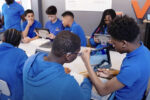Key points:
- Careful budget diagnosis and prioritization is essential as districts near the ESSER expiration in 2024
- So many schools have unmet needs, and financial disasters would negatively impact those already-serious funding situations
- See related article: As COVID relief spending deadlines loom, one district moves ahead with an uncommon tech plan
Among all institutions impacted by the COVID-19 pandemic, few faced challenges as profound and fast-moving as America’s public schools. But as many large organizations return to normal, school districts face a daunting challenge: key federal relief funds are set to expire next September.
Create your Free Account to Continue Reading
eSchool News is Free for qualified educators. Sign up or login
to access all our K-12 news and resources.
Please confirm your email address
More News from eSchool News
Want to share a great resource? Let us know at submissions@eschoolmedia.com.












